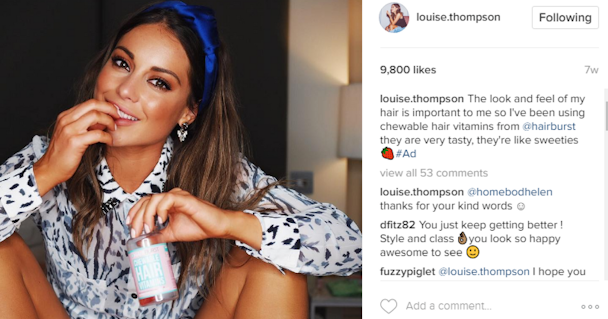Social anxiety and the disconnect of connectivity
Growing up with the emergence of social media has undoubtedly influenced my approach to friendship, relationships and self-image – whether I like it or not. Relationships that were behind closed doors became visible and social contexts that were originally kept separate became intertwined. In one swipe, I could see what my friends were doing, which celebrity’s relationships had broken down and where I could buy the new jacket that my favourite influencer wore that week.

Made in Chelsea star captures the influencer market
The rise of connectivity has seen social media channels – in particular Twitter, Facebook and Instagram – become part of most people’s daily routine, with the average person checking Instagram more than thirty times a day. People are endlessly scrolling through photo upon photo of those portraying the ‘perfect lifestyle’, which is effecting their behaviour in the real world.
Millennials, (like me!) have borne the brunt of the birth of social media. We’re tech-savvy and media literate. A naturally self-deprecating generation, we have been trained to assess our success and position in life in comparison with others. We use social media as the foundation of relationships – whether this be with a friend, a group or a brand. While it can be a positive tool in strengthening current relationships, some find themselves needing it to defeat a feeling of isolation.
The rise of influencers, documenting their daily fashion decisions, buying habits and lifestyle choices can lead to one person gaining thousands or even millions of followers. These loyal fans value influencers’ opinions, mimic their style and share their thoughts. An online relationship is formed through aspiration, yet there is disconnect between influencer and follower. I for one have fallen into the trap of being consumed by someone’s online identity, obsessing over their content and judging my lifestyle in comparison to theirs. The relationship between influencer and follower will never have the same dimension as one where they can meet in person or have a private conversation. Most realise that they don’t have a relationship of this kind with the people they follow, but still continue to value their opinion highly, even when all they know is an online persona. Watching someone’s highly curated lifestyle, but only seeing the filtered façade, can pave the way for social anxiety as people compare their lives to those they follow.
Using social media as a way to give you a boost can turn into a vicious circle of dependency, often making us feel worse. But what can brands do to help us?
Brands can acknowledge the social concerns of their consumer, while still keeping their authenticity and preserving their consumer’s trust. Consumers now search for authentic brands to validate their purchasing decisions. Influencers have a responsibility to understand how their audience will feel about their content, so it is the responsibility of brands to make appropriate choices about who they work with and how they do it. Consumers are more susceptible to sponsored content (#spon) and aren’t afraid to expose bloggers on their blatant promos which aren’t in line with their usual content.
Brands have to cater to the consumer by providing meaningful content, served in a practical, real manner rather than old-school clichés. This paves the way for smaller, emerging brands to seize opportunities to produce topical content that can allow them promising exposure. Viral culture has already allowed smaller, challenger brands to maximise this without being accused of ‘jumping on the bandwagon’, as they tailor their content specifically to their (albeit smaller) audience. Larger brands may fall by the wayside with a lack of personable community management on their channels, ignoring the wants and needs of the consumer.
A brand I have recently started working with, which has achieved this successfully is Bodyform – a feminine hygiene company that has led the conversation surrounding the period taboo issue in the media as well as in personal relationships. Their disruptive tone of voice, relatable imagery and consistent, strategic community management has meant that their most recent campaign Blood Normal, has received an overwhelming amount of engagement. Their audience unapologetically share their stories, give each other advice and support one another in response to their pubescent (and more recent!) experiences. What’s more, Bodyform embraced the negative sentiment they originally received, but cleverly transformed it into a piece of video content that exposes the stigmas surrounding periods further.
Authenticity entails honesty, which can be shown from the quality of content to the tone of voice. Campaigns that stay loyal to their brands’ ethos increase their chances of customer retention and positive engagement. Looking to the future, all brands will need to adapt to this environment: as we’ve so often seen, they can be undermined quicker than you can retweet a status.
Sophie Garrett, account manger, Media Bounty
Content by The Drum Network member:

Media Bounty
We’re Media Bounty. And we’re working to become the UK’s leading ethical independent creative agency by 2026.
Our team delivers award-winning strategy,...

